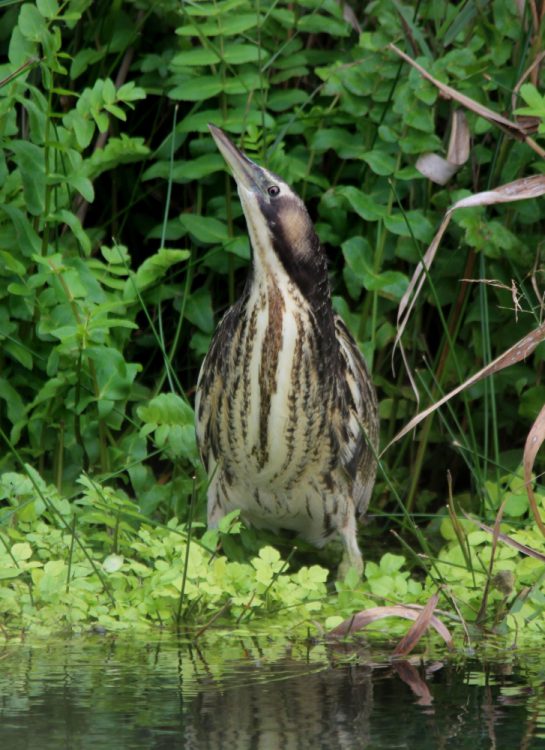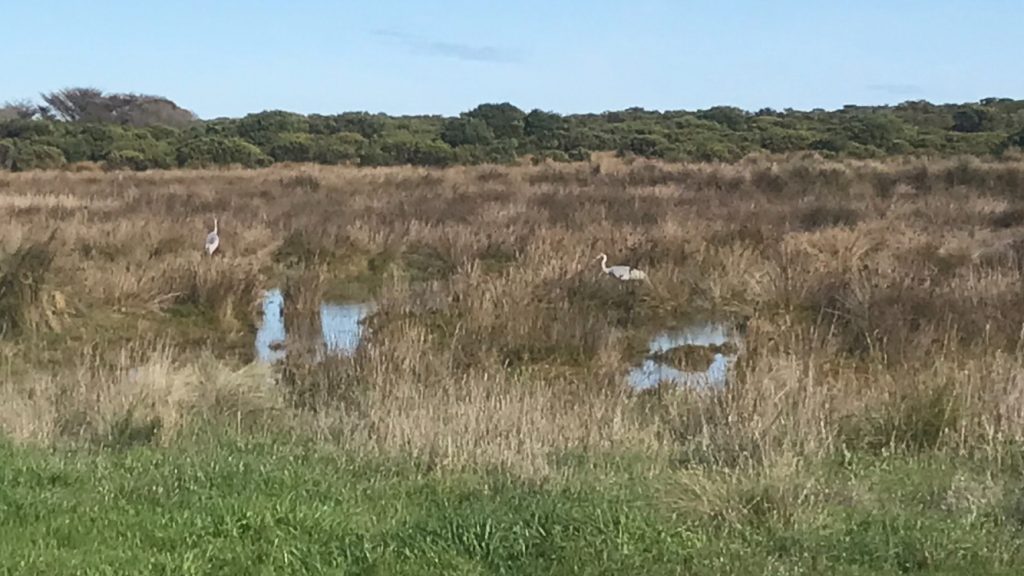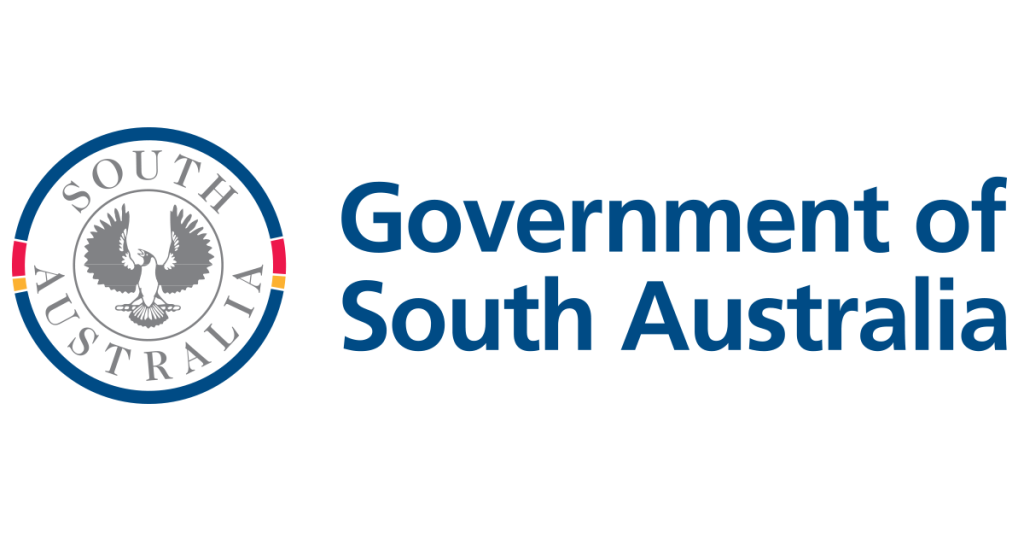A bittern settles in at Hutt Bay, while a brolga pair also arrive for a look at the restored wetland!
With the recent drain-filling works complete at Hutt Bay (summarised here previously), we’ve been eagerly waiting for the winter rain to fall. Early winter saw the soil soak to capacity, and mid-winter rains – rather than slowly filling and flowing down the artificial drains – are now more naturally inundating the eastern portion of the basin, bringing rapid vegetation growth and an influx of birds.
While I was out in the wetland a couple of weeks ago, I stopped on the northern edge to hammer in a stake for an additional photopoint – a permanent location for periodic photos which will give us a visual record of wetland response over time. On the first strike of the hammer, up came an Australasian Bittern at about 50 metres, flushed from 20 cm deep water amongst Sharp Club-rush (Schoenoplectus pungens) and Sea Rush (Juncus kraussii). Bittern are a big bird and distinctive on the wing when flushed, with a heavy looking flying style and legs dangling after take-off on their usually short flights.

This one took off over the wetland before landing in a patch of Phragmites that is starting to get wet a few hundred metres to the east. Since it didn’t go too far, hopefully that’s a sign it’s planning to hang around a while longer. If so, this bird will be following in the footsteps of another bittern (affectionately known as Robbie) who endorsed our wetland restoration work several years ago by appearing at Long Swamp within weeks of wetland restoration works getting underway.
Some poor quality footage below, but hopefully you get the idea!
Interestingly, just as a bittern has appeared at the site, the extra water now sitting up the eastern end of the wetland has also attracted some new visitors to that part of the reserve in the past couple of weeks – a pair of brolga. Thanks to Robert Thompson for sending through this observation and the image below!

Over the second half of this year we’ll be closely monitoring wetland levels and vegetation change at Hutt Bay, and starting revegetation with the planting of Woolly Tea-tree (Leptospermum lanigerum) in the fresher eastern end of the swamp. This will help expand the existing remnant patch, which had regenerated slowly after the historic drainage and clearance of the patch many decades ago. Woolly Tea-tree shrubland often contains other species that are tolerant of having ‘wet feet’, such as Tall Saw-sedge (Gahnia clarkei), Scented Paperbark (Melaleuca squarrosa) and the tall reeds Phragmites and Typha. The community is typical of the fresh groundwater-fed coastal wetlands, with thick canopy providing ideal cover for less-seen fauna such as Southern Emu-wren, Spotless Crake, Olive Whistler and Swamp Antechinus and nesting habitat for Blue-winged Parrot.
Restoration works will be ongoing at Hutt Bay, and if you’re interested in volunteering at the property, please email Jess here or call 0438 671 356.
The project at Hutt Bay is supported by the Limestone Coast Landscape Board, through funding from the South Australian Government’s Landscape Priorities Fund and the Australian Government’s National Water Grid Connections Funding Pathway.



